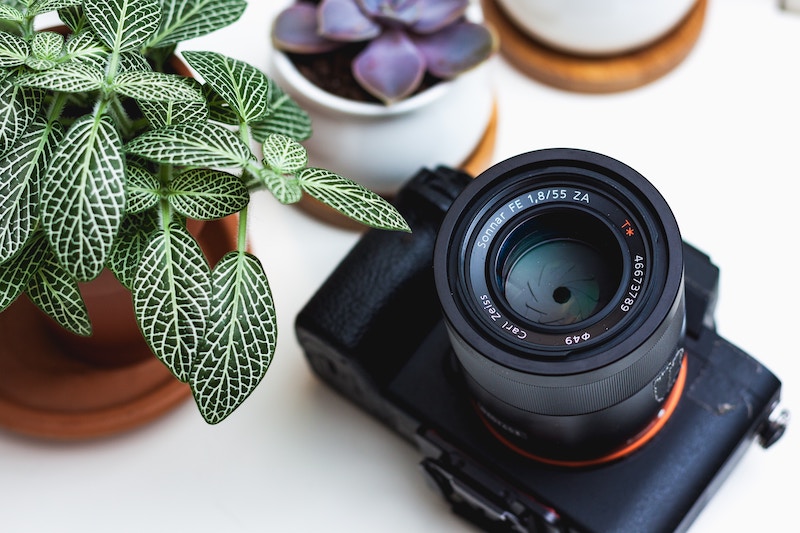
Why You Need a Full Frame 35mm Camera
These days there is a real buzz in the air due to the number of new full frame mirrorless cameras that have either entered or will be entering the market soon.
DOES THE FULL FRAME SYSTEM HAVE TRUE ADVANTAGES?
Watch Tony Northrup explain the difference between Full-Frame, APS-C and Micro Four Thirds.
LARGER PIXELS
Of course, the larger the sensor, the larger each pixel will be for a sensor of any given megapixel (MP) rating compared to that of smaller sensors. No surprise there! Basic physics that even the layman can comprehend.
Larger pixels can capture more color information and also obtain more incoming light with greater efficiency and less noise than smaller ones.
This is why full frame sensors are able to deliver lower image noise at higher ISO settings than their cropped brethren.
The better dynamic range and the ability to distinguish more subtle color hues have given full frame the edge in superior color accuracy, realism, and vibrancy with the end result; in particular, the RAW image.
BETTER RESOLUTION
Full frame cameras can deliver higher resolution, and their sensors can also be configured to hold a more significant number of megapixels providing higher resolution than smaller sensors.
This enhances the sensor’s ability to capture fine detail.
Increasing the number of pixels on a full frame sensor does make each individual pixel smaller.
But these pixels are still large enough to allow the significant sensor advantages, which culminates in higher image quality and better dynamic range.
BETTER ISO PERFORMANCE
The manufacturer decides, based on their customer’s expectations, what calibration they’ll use in regards to ISO performance and resolution.
Such a camera is the Sony Alpha a7S II, which has a 12.2MP CMOS sensor, and a maximum ISO of 409600.
This camera is targeted at low-light users, while the Sony Alpha a7R II, has an ultra high resolution 42MP CMOS sensor and a maximum ISO of just 102400 (which is still ridiculously high).
SHALLOWER DEPTH OF FIELD
Bigger sensors provide enhanced Depth Of Field (DOF) control, therefore requiring longer lenses to cover the larger format at any given coverage angle, compared to smaller sensors.
This means that lenses must be bulkier, and fast telephoto lenses, in particular, can be behemoths with eyewatering prices.
The 50mm Field Of View (FOV) on the 35mm sensor is considered the standard FOV on full frame, along with the equivalent FOV for APS-C (35mm) and micro four thirds (25mm) cameras.
Because of the difference in sensor size though, the full frame will produce a shallower DOF at all equal apertures. This is a well-known advantage in portrait shooting where creamy bokeh is desired.
However, the M43s deeper DOF can be preferred for certain types of photography, such as macro shooting.
This shallow DOF is quite apparent at apertures of f/2.8 and beyond, and allows the photographer to capture very pleasing portraits with the subject separated from a blurry soft background and/or foreground.
FOCAL LENGTH CONVERSIONS UNNECESSARY
Not having to deal with any conversions of focal lengths when using lenses on a 35mm camera is very convenient.
For example, a 50mm on a full frame is 50mm, but on an APS-C is 75mm/80mm (1.5/1.6x) and on a micro four thirds (MFT) is 100mm (2x). These are FOV only.
On the other hand, cropped sensors can be useful when shooting telephoto because you can get the same FOV as the full frame with a lighter, cheaper set-up.
That is if you are not photographing in the dark or don’t need less DOF.
BETTER OPTIONS FOR PRINTING LARGE
Because full frame sensors capture stacks of information on every pixel, the RAW image files are able to be printed at massive sizes.
This can be achieved without the side effect of compromising the image quality and detail, even when carefully examined.
Photographers that specialize in shooting images for billboards and gigantic murals which are even more significant in size may usually prefer medium format cameras, but by and large, photographers who print big with their full frame cameras are more than satisfied with the results.
FLEXIBILITY OF CROPPING
Cropping is an essential creative tool in photography. There are many occasions when the optimal composition is unobtainable, and these images can be saved by cropping out unwanted distractions or by bringing the subject into a more favorable perspective.
It’s a lot easier to crop pictures shot with a full frame sensor without compromising image quality or increasing visual noise because you start out with more information and detail, to begin with.
The difference is especially noticeable in radically cropped images where the final image represents 50% or less of the image captured by the sensor.
FULL FRAME CAMERAS WILL SERVE YOU WELL
I’ve mentioned some advantages of choosing a full frame 35mm camera. However, APS-C or micro four thirds is not without merit and could be a better choice for the consumer or budget-minded hobbyist.
There is definitely a weight, size and price advantage to be had.
APS-C cameras such as the Nikon D500, the Sony Alpha a6400, and M43 cameras like the Olympus OMD E-M1 Mark II and Panasonic G9 are very capable machines that can be found in many a professionals bag.
That said, if you are obsessed with getting the absolute best image quality, then the full frame DSLR and mirrorless camera systems will serve you very well indeed.
